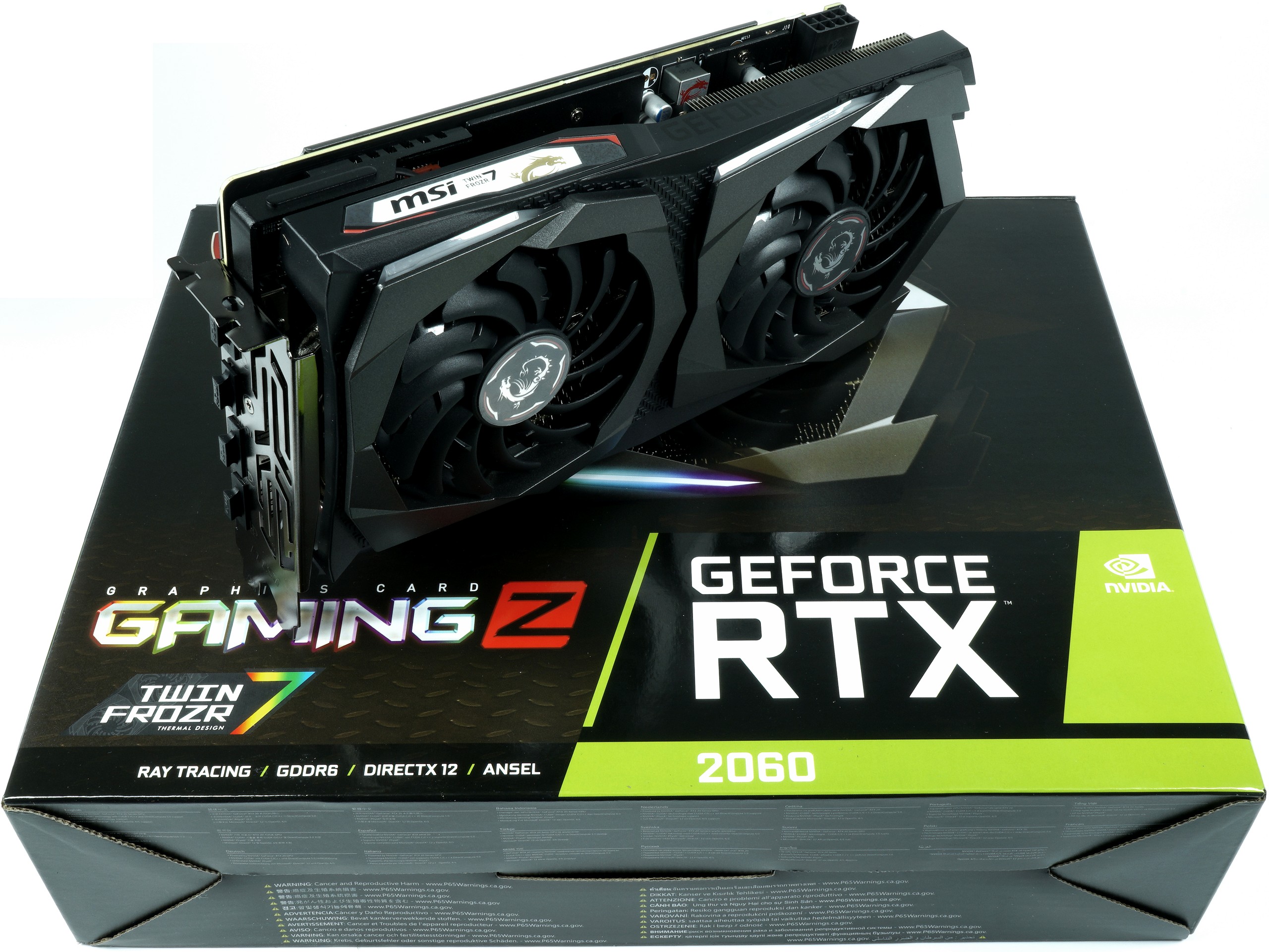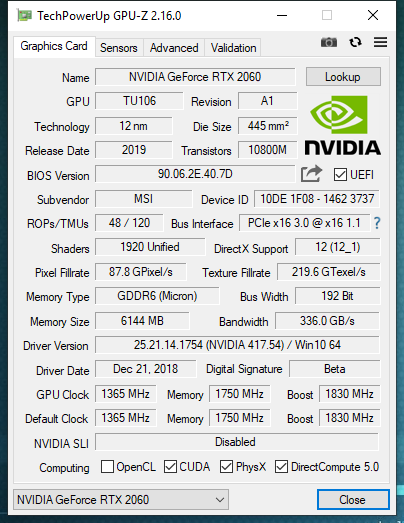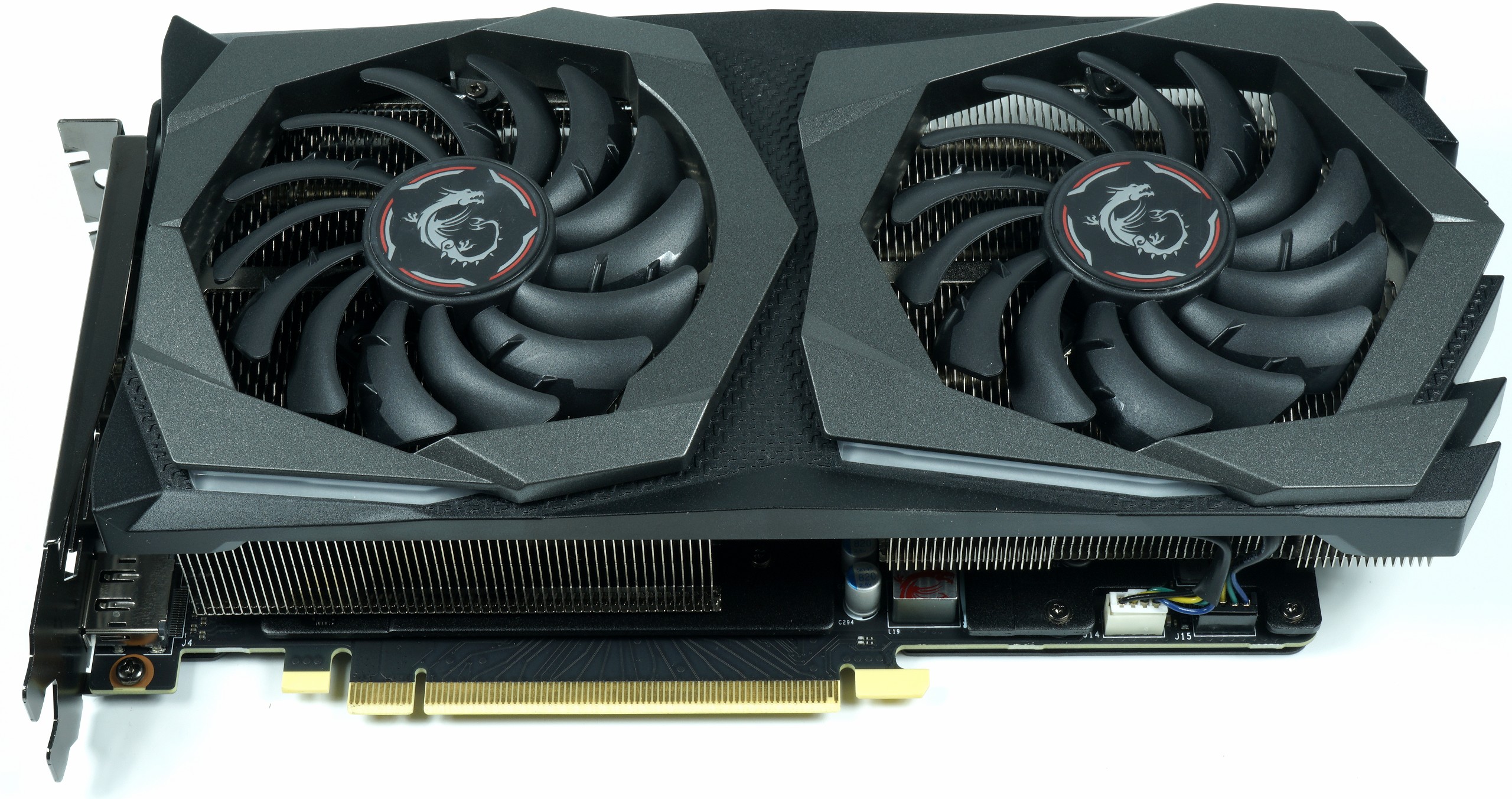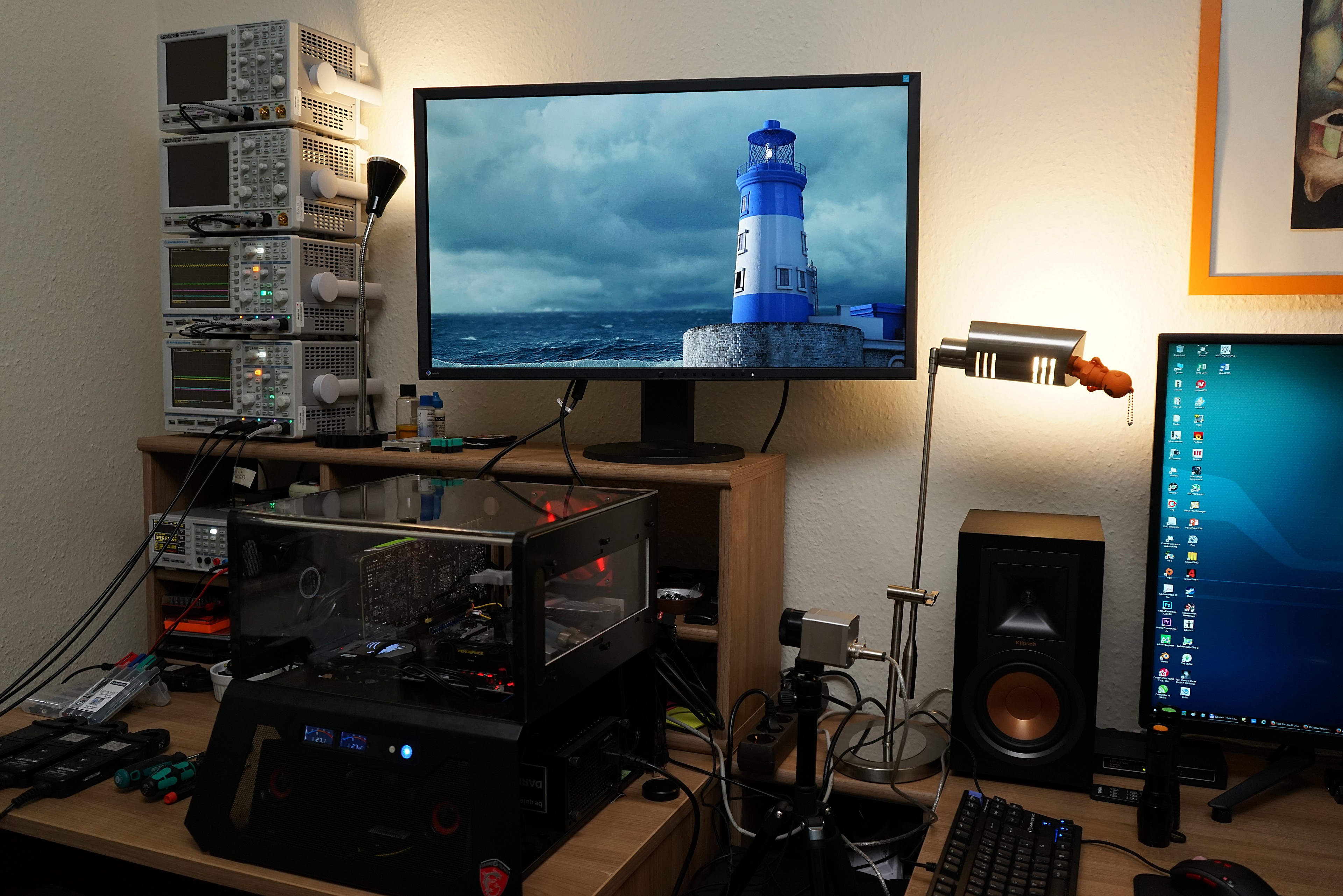The new MSI RTX 2060 Gaming Z is already properly brushed on riot from the factory. Certainly also visually, but above all at the beat. And so MSI sends The smallest GeForce RTX card from Nvidia to the customer with a good beat, a sufficiently large power limit of course included. Because it almost scratches out of the box at the 2 GHz mark, even after full warming. What else (off) goes on and how loud and warm the final cards will then become, will clarify exactly this test.

With this card I really didn't make it easy, but as a retail card from the right mass production, the product that will soon be on the shelf is different from what was previously delivered to individual reviewers. Their maps from the MVT (Manufacturing Verification Testing) phase do not quite represent the final status, so my review and the results may differ significantly from other tests in some respects. I have to put that first.
Unboxing and first impressions
The 954 gram card is 24.8 cm long, measures 12.5 cm from top edge slot panel to top edge graphic card case and is 4.1 cm thick. In addition, there is another 0.5 cm for the backplate in brush look. The cover is made of plastic in the base and of course there is still a lot of (background) illuminated area on the front and bottom, which can be regulated by driver and can also be switched off. This includes the MSI-TwinFrozr-7 logo on the top.
The length results despite the actually only 21cm short PCB from the fan assembly with two 8.5 cm fans and 14 rotor blades, the cooling fins of the approximately one kilo heavy Boliden are arranged vertically and in two blocks. Four 6 mm heatpipes as nickel-plated copper composite material then distribute the waste heat to the said cooling fins, the upper edge of which deviates from the normal standard as a group structure.
The connection options are analogous to the reference of the normal average. You get three DisplayPort1.4 and one HDMI2.0 jack, but you do not have the USB-C jack on the slot panel. MsI delivers this card in contrast to the larger GeForce RTX 2070 Ti Gaming Z with only an 8-pin ATX power supply, but it should struggle well. But more on that. MSI gives the card a maximum power limit of 200 watts, ex works a Power Target of 190 watts is preset.
The screenshot of GPU-Z gives us a first impression:

Technical data and comparison maps
At the end of this introduction, the maps of the new generation and those of the old generation in direct tabular comparison:
| GeForce GTX 1060 FE | GeForce RTX 2060 FE | MSI RTX 2060 Gaming Z |
GeForce RTX 2070 FE |
GeForce GTX 1070 FE |
|
| Architecture (GPU) |
Pascal (GP106) | Turing (TU106) | Turing (TU106) | Turing (TU106) | Pascal (GP104) |
| CUDA Cores |
1280 | 1920 | 1920 | 2304 | 1920 |
| Tensor Cores |
N/A | 240 | 240 | 288 | N/A |
| RT Cores |
N/A | 30 | 30 | 36 | N/A |
| Texture Units |
80 | 120 | 120 | 144 | 120 |
| Base Clock Rate |
1506 MHz | 1365 MHz | 1365 MHz | 1410 MHz | 1506 MHz |
| GPU Boost Rate |
1708 MHz | 1680 MHz | 1830 MHz | 1710 MHz | 1683 MHz |
| Storage expansion |
6GB GDDR5 | 6GB GDDR6 | 6GB GDDR6 | 8GB GDDR6 | 8GB GDDR5 |
| Storage bus |
192-bit | 192-bit | 192-bit | 256-bit | 256-bit |
| Bandwidth |
192 GB/s | 336 GB/s | 336 GB/s | 448 GB/s | 256 GB/s |
| Rops |
48 | 48 | 48 | 64 | 64 |
| L2 Cache |
1.5 MB | 3 MB | 3 MB | 4MB | 2MB |
| Tdp |
120 W | 160 W | 190 W | 185W | 150w |
| Transistors |
4.4 billion | 10.8 billion | 10.8 billion | 10.8 billion | 7.2 billion |
| The size |
200 mm2 | 445 mm2 | 445 mm2 | 445 mm2 | 314 mm2 |
| Sli |
No | No | No | No | Yes (MIO) |
Test system and measurement methods
We have already described the new test system and the methodology in detail in the basic article "How We Test Graphics Cards, as of February 2017" and therefore refer to this detailed basis for simplicity. Description. So if you want to read everything again, you are welcome to do so. However, we have again improved CPU and cooling to largely exclude possible CPU bottlenecks for this fast card.
If you are interested, the summary in table form quickly provides a brief overview:
| Test systems and measuring rooms | |
|---|---|
| Hardware: |
Intel Core i7-8700K x 5 GHz MSI Z370 Gaming Pro Carbon AC 16GB KFA2 DDR4 4000 Hall of Fame 1x 1 TByte Toshiba OCZ RD400 (M.2, System SSD) 2x 960 GByte Toshiba OCZ TR150 (Storage, Images) Be Quiet Dark Power Pro 11, 850-watt power supply |
| Cooling: |
Alphacool Ice Block XPX 5x Be Quiet! Silent Wings 3 PWM (Closed Case Simulation) Thermal Grizzly Kryonaut (for cooler change) |
| Housing: |
Lian Li PC-T70 with expansion kit and modifications Modes: Open Benchtable, Closed Case |
| Monitor: | Eizo EV3237-BK |
| Power consumption: |
non-contact DC measurement on the PCIe slot (Riser-Card) non-contact DC measurement on the external PCIe power supply Direct voltage measurement on the respective feeders and on the power supply 2x Rohde & Schwarz HMO 3054, 500 MHz multi-channel oscillograph with memory function 4x Rohde & Schwarz HZO50, current togor adapter (1 mA to 30 A, 100 KHz, DC) 4x Rohde & Schwarz HZ355, touch divider (10:1, 500 MHz) 1x Rohde & Schwarz HMC 8012, digital multimeter with storage function |
| Thermography: |
Optris PI640, infrared camera PI Connect evaluation software with profiles |
| Acoustics: |
NTI Audio M2211 (with calibration file) Steinberg UR12 (with phantom power for the microphones) Creative X7, Smaart v.7 own low-reflection measuring room, 3.5 x 1.8 x 2.2 m (LxTxH) Axial measurements, perpendicular to the center of the sound source(s), measuring distance 50 cm Noise in dBA (Slow) as RTA measurement Frequency spectrum as a graph |
| Operating system | Windows 10 Pro (1803, all updates) |









































Kommentieren